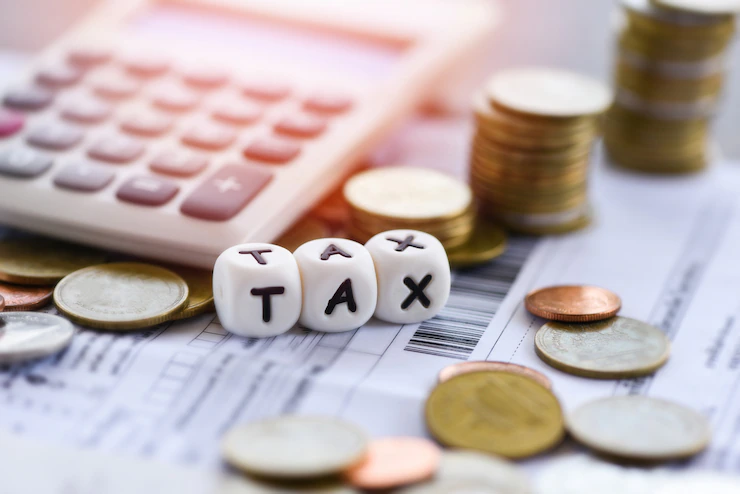7 Tips To Get Started In Crypto Investing
by Arnab Dey Investing Published on: 26 April 2022 Last Updated on: 18 June 2022

You may not understand how it’s created or even how it works, but you know that cryptocurrency is thriving right now.
The virtual currency has had its ups and downs, but over the last two years, the value of Bitcoin, perhaps the most popular type of cryptocurrency, has increased by more than six-fold. Other types of cryptocurrency have also experienced exciting gains or are picking up momentum.
If you’re interested in crypto investing, this guide will show you how to get started. Don’t be intimidated — it may be easier than you think, and there are all kinds of options.
Here Are Seven Tips To Help You Get Started In Crypto Investing:
1. Identify and analyze your investment targets
First, spend some time researching your prospective investments. Bitcoin makes most of the headlines, but it’s certainly not the only option.
Ethereum, Litecoin, Polka Dot, Tether, Solana, and Binance are just a few examples of the over 1500 types of cryptocurrencies in the world.
Just as you would if you were hand-picking stocks, you need to research your options and decide where you want to put your money. If you want to diversify your crypto investing, you may want to consider an exchange-traded fund (EFT).
EFTs contain a mix of investments so you don’t have to stake all your money on a single investment, and you can find ETFs exclusively comprised of crypto.
2. Think about the logistics
Once you decide which virtual currencies to invest in, you need to decide how you’re going to invest your money. You can go onto a crypto exchange and directly buy and sell crypto.
This can be a great option for someone who wants to actively day trading, but the user interface of many exchanges can be daunting for new investors.
Alternatively, you can hire a broker. They take care of the trades, but their fees tend to be a lot higher than most of the exchanges. You can also invest in crypto through a traditional investment vehicle.
For example, some people put crypto in their Independent Retirement Accounts (IRA). Unfortunately, many IRA advisors don’t work with crypto so you may need to set up a self-directed IRA. Or, make your tokens work for you, like with Polymesh staking where you stake a given amount of tokens to be used by the blockchain. In return, you’ll receive your tokens back along with rewards from transactions your staked tokens were involved in.
Solo 401k’s are also emerging as an effective way of crypto investing. To open a solo 401k, you must be self-employed — that includes people in the gig economy. Typically, only you or your spouse can work for the company, but in some cases, you can have part-time employees.
Related Resource: How Gold IRA Companies Can Help You Prepare For Retirement
3. Decide where to store the crypto
In some cases, you decide the storage question when you handle logistics. In particular, some exchanges require you to store the crypto on the exchange. In other cases, you’ll need to manage storage on your own.
For instance, if you use a solo 401k for crypto investing, your 401k will own the crypto, but you’ll get to decide where to store it. The main options are hot or cold wallets.
Hot wallets are connected to the internet, making them more convenient but also more susceptible to theft. Cold wallets are not connected to the internet, and they can be stored in your home, in a safe deposit box, or wherever you like.
4. Look toward the future
When choosing and managing your investments, don’t hyper-focus on the past. The history of an investment is not necessarily an indicator of its future growth. Instead, look toward the future.
Try to anticipate what’s going to happen and its effect on various types of cryptocurrencies. Read what the experts have to say, but choose your sources carefully.
Make sure that you’re reading independent investment advice or journalism about investment trends. Don’t get confused by content generated to sell investments.
5. Get ready for volatility
All investments face a degree of volatility, but virtual currencies are especially volatile. Bitcoin, for example, may have grown substantially over the last six years.
But someone who invested in Bitcoin only two years ago has watched their investment grow tenfold and then lose about a third of its value.
Overall, their investment increased by over 600%, but the ups and downs were precipitous. Get ready for volatility if you’re investing in cryptocurrency.
Be aware that there will be breathtaking sweeps and falls. Decide if you’re the type of investor who rides out the storms and stays in the long game, or choose a target where if you hit it, you sell.
6. Don’t invest more than you can afford
If your entire nest egg is in crypto, the stress can be overwhelming, and while the potential for gains is high, you also risk losing it all. To protect yourself, don’t invest more than you can afford.
Make sure that your living expenses are covered and your other investments are safe and diverse. Then, put what you can into crypto and have fun with it.
7. Research the tax implications
The Internal Revenue Service (IRS) treats crypto-like property. If you sell it at a profit, you have to report the gains and pay tax accordingly.
Virtual currency held less than a year is taxed at your regular income tax rate, while investments held over a year face the long-term capital gains rate.
Depending on your income, the capital gains rate is between 0 and 20%, making it less than income tax for most people.
However, you can write off your losses against the gains. Keep in mind that you only incur gains and losses when you actually sell the investments. You don’t pay taxes for unrealized gains and losses.
You can also use strategies to invest pre-tax dollars. In particular, if you use retirement accounts to purchase crypto, the investments are pre-tax.
In a lot of cases, the investments in these accounts also grow tax-free. Then, you pay tax when you take out the income during retirement.
As needed, you can reverse the timing of the taxation of your retirement accounts. If you put money in a Roth IRA, you don’t get a tax deduction for the contribution, but in return, you don’t have to pay tax when you withdraw the funds during retirement. Solo 401k also offers this feature.
Now that you’ve got the basics down, there’s nothing to stop you. It’s time to dig into the research, choose some investments, and start enjoying this exciting opportunity.
Read Also:










































































































